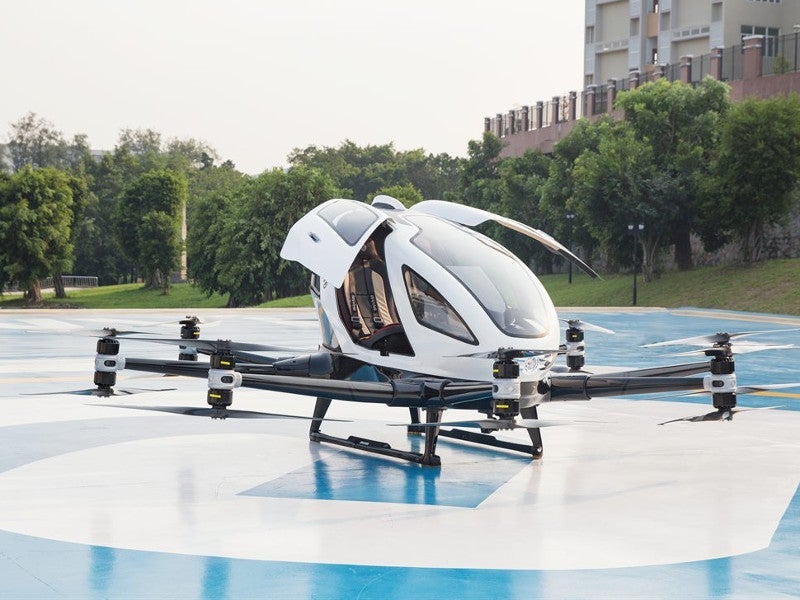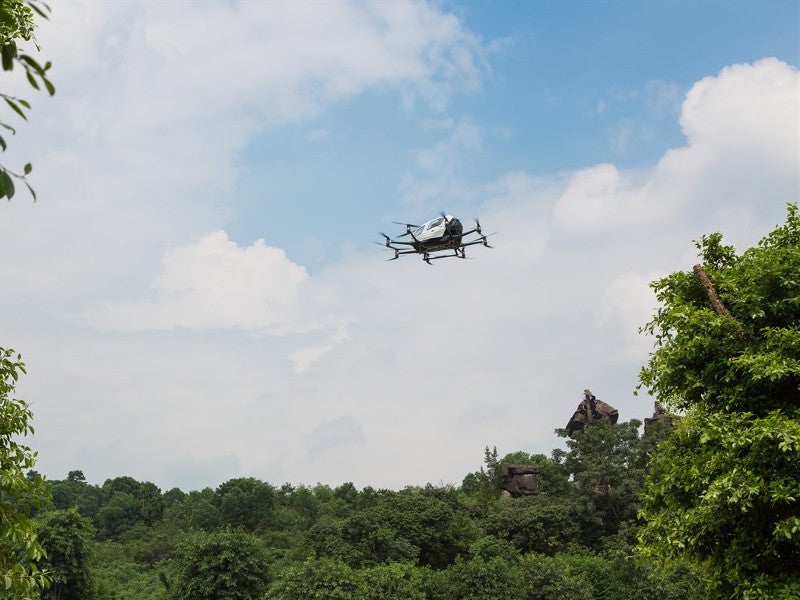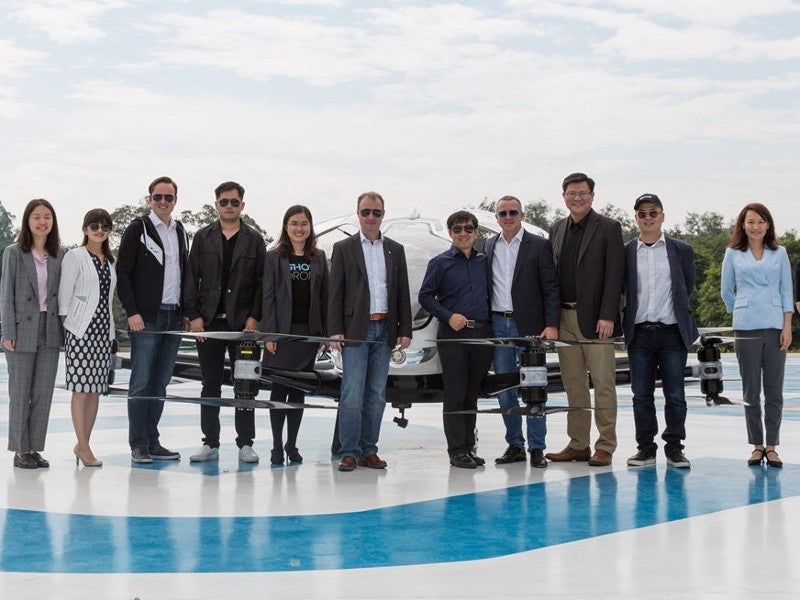Ehang 216 is an electrical vertical take-off and landing (VTOL) autonomous aerial vehicle (AAV) designed to address the urban transport needs by providing on-demand air taxi services.
The AAV is developed by Chinese autonomous aircraft developer Ehang, which entered a partnership with Austria-based aeronautical systems manufacturer FACC in November 2018 for the serial production of the aircraft.
Ehang 216 was introduced to the public for the first time at the 4Gamechangers Festival held in April 2019 in Vienna, Austria.
The applications of the Ehang 216 aircraft include public transportation, tourism and sight-seeing, medical evacuation / aid, and short distance logistics.
Ehang 216 development details
The Ehang 216 aircraft was developed based on its predecessor Ehang 184. Demonstration flights of 216 were conducted in Qatar and the Netherlands in 2018, while the certification process is currently underway. The aircraft is expected to enter serial production in 2020.
FACC and Ehang aim to manufacture up to 300 aircraft in Austria by 2020 and up to 3,000 air taxis by 2025. The company also aims to start local production of the units in North America and Asia.
Ehang 216 design and features
Ehang 216 AAV is a low-altitude, high-power, self-driving aircraft made using carbon composite material and metals to achieve the required strength-to-weight ratio.
The length of the aircraft is 5.61m, height is 1.76m, and kerb weight is 360kg. The aircraft is capable of carrying payloads of up to 260kg.
Ehang 216 features a small aero-cab structure, which can accommodate up to two passengers with sufficient leg room and baggage space. Its fuselage is supported by rigid skid-type landing gear, which ensures sufficient clearance between the ground and the rotors.
The fuselage is equipped with four extended V-shaped struts, which spread at equidistance leaving space for entry and exit of the passengers. It is fitted with a taxi / landing light in the front.
The AAV features two gull-wing doors hinged at the top, which occupy less space and ensure aerodynamic shape. The aircraft cabin is air-conditioned, internet-enabled and features well-furnished interiors.
Flight control systems
The aircraft can perform fully autonomous flight using the on-board advanced flight control system, intelligent navigation system, and a global positioning system (GPS).
Ehang aims to work with local aviation authorities to establish an intelligent command and dispatch centre to provide a reliable flight plan for the aircraft. The system’s parameters can be monitored from the flight command and control centre.
The aircraft’s flight path, critical flight parameters, and in-flight options are displayed on the tablet for passengers.
The AAV is fitted with a full back-up and fail-safe system in the event of any system failure.
Ehang 216 AAV propulsion and performance details
The Ehang 216 AAV is powered by 16 electric motors, which are connected to 16 propeller blades in coaxial double-baled design.
The electric engine on board the aircraft enables a cruise speed of 130km/h. The minimum flight duration of the aircraft is 30 minutes, while the maximum flight range is 35km.
A computer visual system is installed in the aircraft to ensure accurate vertical take-off and landing. The aircraft follows an inverted U-flight path, which reduces the need for excess manoeuvres.




